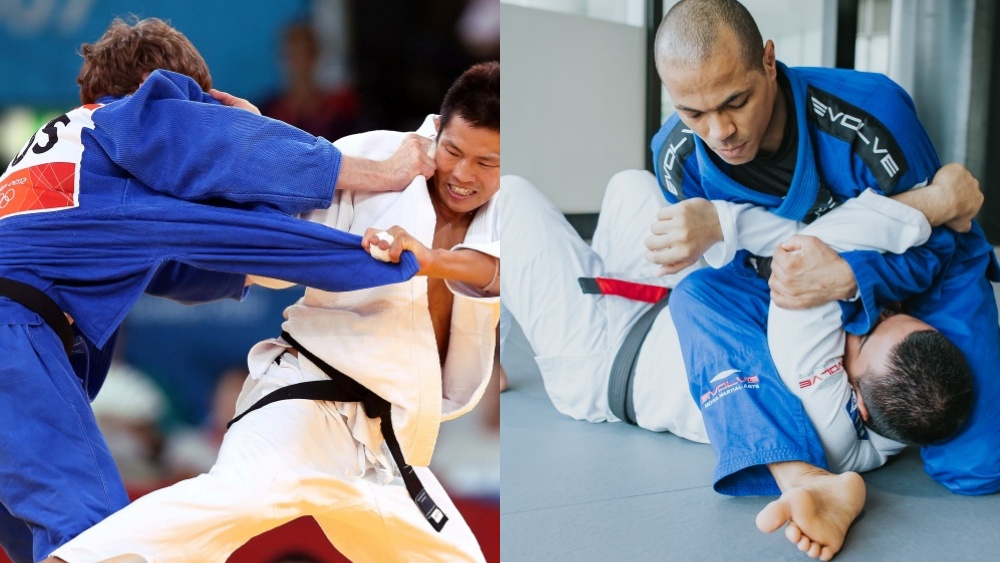BJJ vs. Judo vs. MMA for Self-Defense
Brazilian Jiu-Jitsu (BJJ), Judo and Mixed Martial Arts (MMA) are three popular martial arts that are often compared when it comes to self-defense. While they have some similarities, each has its own unique style, techniques and philosophy.
When it comes to professional fighting, the MMA odds change all the time, with new and improved methods developing, showing a counteraction towards the next. Here is everything we think about these fighting forms when it comes to self-defense.

https://www.pexels.com/search/MMA/
BJJ vs. Judo
BJJ and Judo share many similarities. Both are grappling arts that emphasize technique over brute strength, and both use throws, takedowns and joint locks to control opponents. However, there are some key differences between the two.
BJJ is a martial art that was developed from Judo in Brazil in the early 20th century. It focuses more on ground fighting and submission holds, with the goal of immobilizing or forcing an opponent to submit. BJJ practitioners are known for their proficiency in grappling on the ground and have a reputation for being able to subdue much larger opponents.
Judo is a martial art that originated in Japan in the late 19th century. It places a greater emphasis on throws and takedowns, with the goal of quickly taking an opponent to the ground and scoring points. Judo practitioners are known for their ability to throw opponents with speed and precision.
When it comes to self-defense, both BJJ and Judo can be effective, but their approaches are different. BJJ is often considered more effective for self-defense in a real-world situation because of its emphasis on ground fighting and submission holds. If an attacker takes you to the ground, BJJ’s focus on ground fighting can help you defend yourself and gain control of the situation.
Judo is better suited for self-defense situations where you need to quickly disable or immobilize an attacker without necessarily engaging in ground fighting. Judo’s emphasis on throws and takedowns can allow you to quickly take an attacker to the ground and gain control of the situation without having to engage in a prolonged struggle.

https://www.pexels.com/search/judo/
MMA vs. BJJ/Judo
MMA, as the name suggests, is a mixed martial art that combines techniques from various martial arts, including BJJ and Judo. In addition to grappling techniques, MMA also includes striking techniques such as punches, kicks and elbows.
MMA’s emphasis on a combination of grappling and striking techniques makes it well-suited for self-defense situations where you may need to defend yourself against an attacker with a range of different attacks. MMA fighters are trained to be well-rounded and to be able to adapt to different situations.
However, MMA is a sport and is often practiced in a controlled environment. While the techniques used in MMA can be effective for self-defense, they may not always be practical in a real-world self-defense situation. For example, MMA fighters are often trained to fight with gloves on, which can make certain techniques more difficult to execute without gloves.
BJJ and Judo, on the other hand, are more focused on technique and can be more practical for self-defense in a real-world situation. In addition, BJJ and Judo emphasize control and restraint, which can be important in a self-defense situation where you want to defend yourself without causing serious injury to your attacker.

https://www.pexels.com/search/BJJ/
What is the Best for Defence?
Choosing the best martial art for self-defense is a personal decision and will depend on individual goals, physical abilities and training environment. That being said, each martial art has its strengths and weaknesses when it comes to self-defense.
BJJ is an effective martial art for self-defense, particularly in situations where an attacker takes you to the ground. BJJ’s emphasis on ground fighting and submission holds can help you defend yourself and gain control of the situation, even against a larger opponent. However, BJJ may not be as effective in situations where you need to quickly disable or immobilize an attacker without engaging in ground fighting.
Judo is also effective for self-defense, particularly in situations where you need to quickly disable or immobilize an attacker without necessarily engaging in ground fighting. Judo’s emphasis on throws and takedowns can allow you to quickly take an attacker to the ground and gain control of the situation without having to engage in a prolonged struggle. However, Judo may not be as effective in ground fighting situations as BJJ.
MMA is a well-rounded martial art that combines techniques from various martial arts, including BJJ and Judo, as well as striking techniques such as punches, kicks and elbows. MMA’s emphasis on a combination of grappling and striking techniques makes it well-suited for self-defense situations where you may need to defend yourself against an attacker with a range of different attacks. However, MMA techniques may not always be practical in a real-world self-defense situation, as they are often practiced in a controlled environment with gloves and rules.
Ultimately, the best martial art for self-defense is one that fits your individual goals, physical abilities and training environment. It is important to consider factors such as the level of instruction available, the training environment and the emphasis on practical self-defense techniques when choosing a martial art for self-defense. It is also important to remember that no martial art can guarantee 100% effectiveness in all self-defense situations and that the best defense is often to avoid dangerous situations altogether.
BJJ practitioners are known for their proficiency in grappling on the ground and have a reputation for being able to submit to much larger opponents.



















